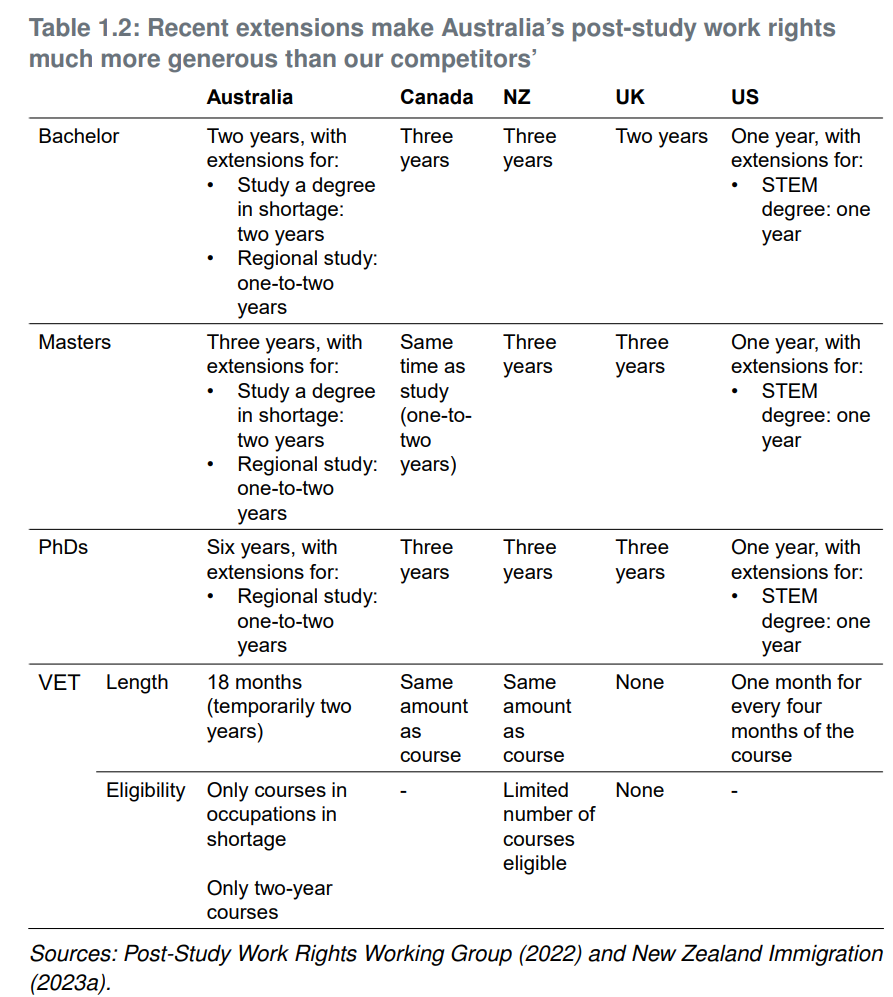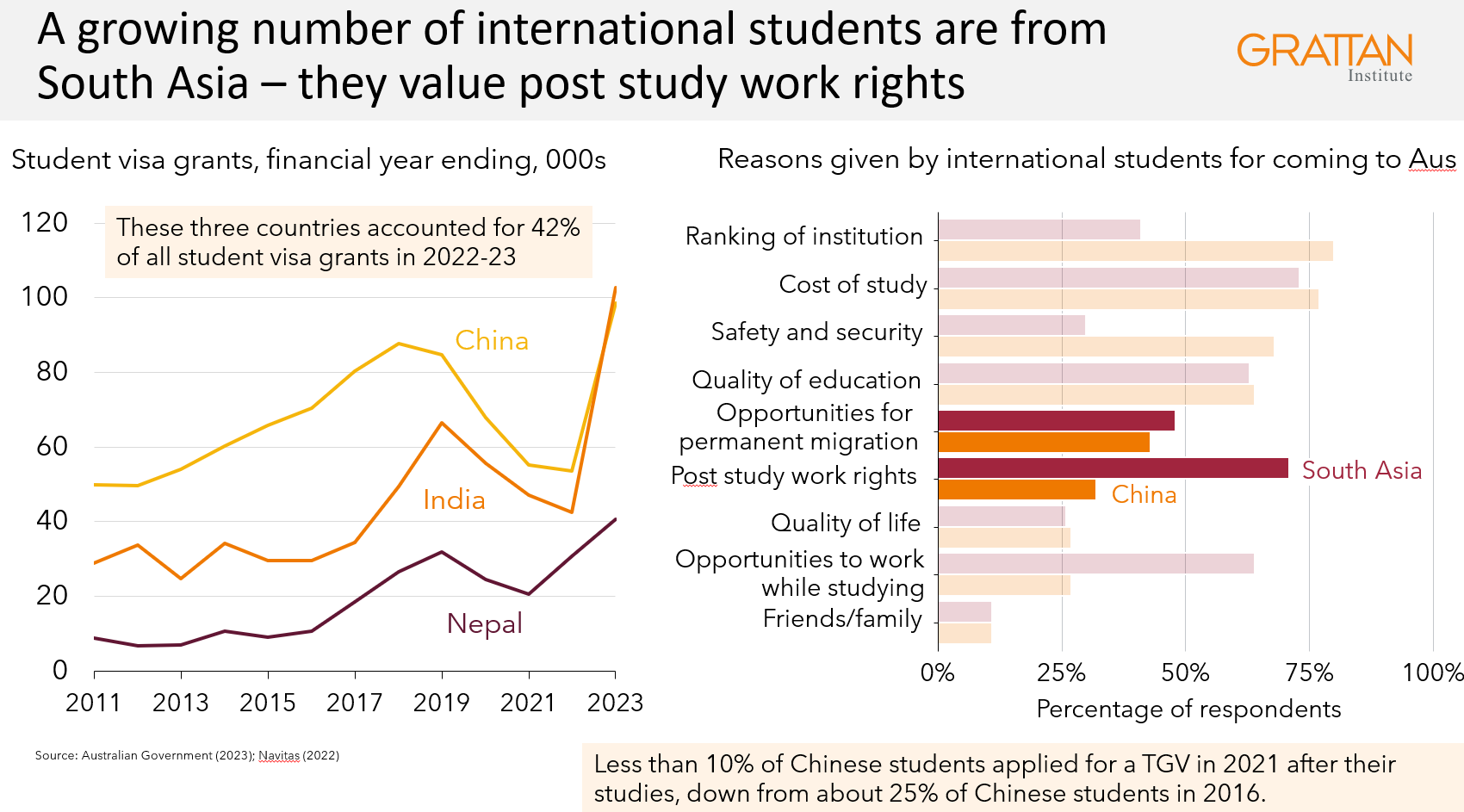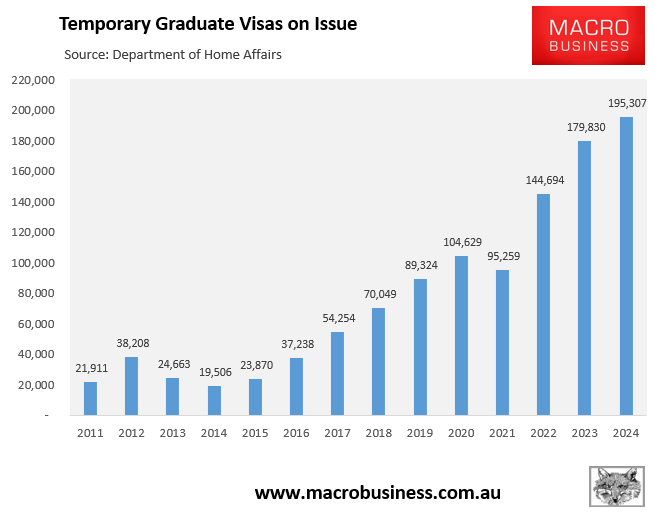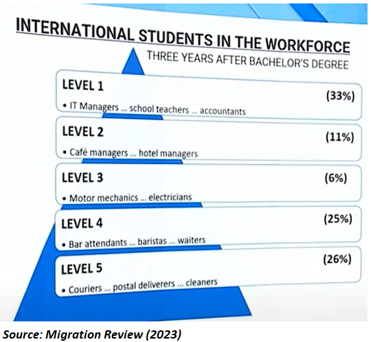Australia offers some of the world’s most generous post-study work rights for international students, as illustrated in the table below.

These generous post-study work rights are coveted by “students” from South Asia, who value post-study work rights and opportunities for permanent residency above most other factors.

Australia has experienced an explosion in graduate (485) visa numbers.

As illustrated above, the number of temporary graduate (485) visas on issue has more than doubled since the onset of the pandemic, from 89,324 at the end of 2019 to 195,307 at the end of 2024.
This explosion in graduate visa numbers has been driven by students from South Asian nations.
- Indian graduate visa numbers surged from 28,850 in Q4 2019 to 70,123 in Q4 2024, an increase of 143%.
- Nepalese graduate visa numbers surged from 13,116 in Q4 2019 to 32,644 in Q4 2024, an increase of 149%.
- Pakistan graduate visa numbers surged from 3,993 in Q4 2019 to 8,139 in Q4 2024, an increase of 104%.
- Sri Lanka graduate visa numbers surged from 2,862 in Q4 2019 to 8,674 in Q4 2024, an increase of 203%.
- Bhutan graduate visa numbers surged from 851 in Q4 2019 to 4,801 in Q4 2024, an increase of 464%.
China, which is Australia’s largest international student market, experienced relatively modest growth in graduate visas, from 14,136 in Q4 2019 to 26,495 in Q4 2024, an increase of 87%.
New analysis from higher education expert Andrew Norton shows that one in five graduate visas on issue are for the spouses or children of primary visa holders.

At least one in three graduate visas from India, Bhutan, Nepal, Pakistan, the Philippines, and Sri Lanka are for family members.

As noted by The AFR’s Education editor Julie Hare:
Under immigration rules, both overseas students and graduate visa holders can bring family members with them. Spouses can legally work for up to 48 hours a fortnight. Some may work illegally in the cash economy. Research by the Grattan Institute in 2023 found that graduates on 485 visas in low-paid jobs were more likely to exploit the visa system to work and were also more likely to be exploited by unscrupulous employers…
Norton said it was “very likely” some groups were exploiting 485 visas, by bringing in their family members to also access the jobs market and in the hope they might eventually be eligible for permanent residency.
Norton forecast that the number of family members from the above South Asian nations will jump as a result of a post-pandemic enrolment surge in students from those nations.
“The really big increase in new overseas student enrolments were in 2023 and 2024 and that will flow through to a big increase in people applying for 485 visas”, he said.
“So if they started a two-year-master’s degree at the beginning of 2023, they will have graduated by the end of 2024. We will start to see pretty significant numbers will start to apply now and in the coming months”.
Why does Australia allow international students and graduates to bring spouses and children with them to Australia? Why has Australia turned student/graduate visas into defacto work and residency visas?
Analysis from the Grattan Institute showed that graduate visa holders tend to be low-paid, earning far less than domestic graduates.

The 2023 Migration Review also showed that more than half (51%) of international graduates with bachelor’s degrees worked in unskilled jobs three years after graduation.

Ultimately, the federal government should aim for a far lower number of high-quality international students and graduates. Such an objective could be achieved via the following types of policy reforms:
- Significantly increase English-language proficiency requirements and mandate prospective students to pass entrance exams before qualifying for a student visa.
- Significantly increase financial requirements, including requiring students to deposit funds into an escrow account before arriving in Australia.
- Reduce the number of hours that international students can work and sever the direct link between studying, working, and obtaining permanent residency.
- Close down the many dodgy private colleges that act as visa mills.
- Allow only distinction-level international graduates or above to receive post-study (485) visas.
- Allow only postgraduate international students to bring family members.
- Increase the temporary skilled migration income threshold to above the median full-time salary (currently ~$95,000).
These types of reforms would place quality above quantity. They would significantly reduce the number of international students and graduates while lifting the average quality and overall productivity of the migration system.

